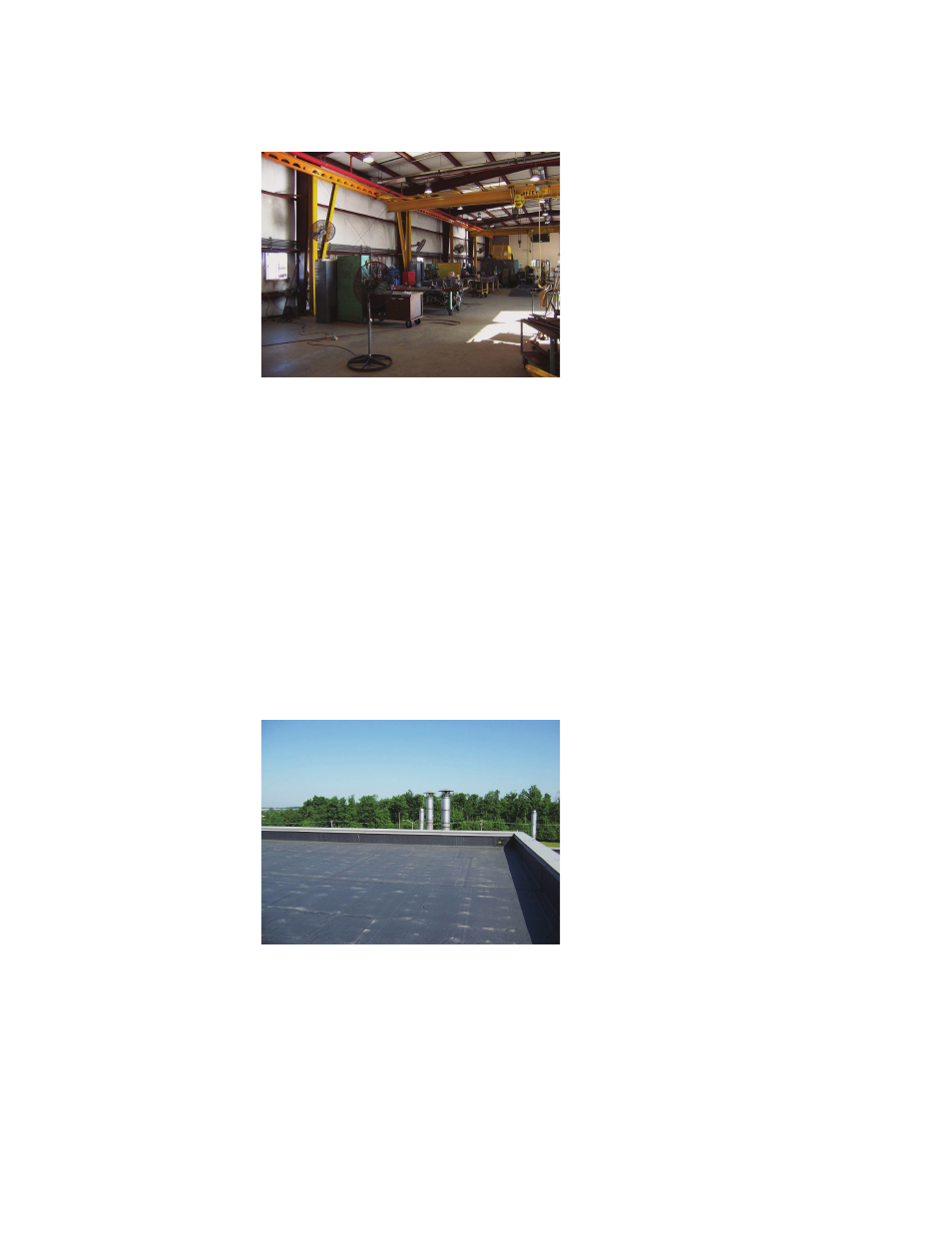Retrotec USACE User Manual
Page 150

D20 ENERGY & PROCESS ASSESSMENT PROTOCOL
D.2.1.5 Air Movement Greater Than 100 fpm Near Exhaust Hoods
(Waste)
Figure D34. Welding area that uses local
exhaust hoods for fume capture that
has pedestal and column-mounted fans
for worker comfort that cause high air
movement in space.
Exhaust hoods are installed to remove airborne contaminants generated by
various processes (e.g., see Figure D34). These hoods have a design air infl ow
to capture and remove contaminants. The air fl ow must overcome any room
air currents to capture these contaminants. If there is a high degree of room
air currents, the amount of exhaust air must be increased to overcome them,
which results in a waste of energy. These room air currents can be caused by
a supply air distribution system with high velocity discharge outlets near the
hoods, air entering the area through open doors, or the use of pedestal fans in
the area. When an excessive exhaust air is required, extra energy is required
to power the exhaust and makeup air fans, and more heat is needed to temper
the supply air in winter.
D.2.1.6 Hot Air Warmer Than 93.3 °C (200 °F) Being Exhausted
Outside in Ventilation Systems (Waste)
Figure D35. Exhaust stacks on engine
dynameters that exhaust hot gases to
outside.
Energy is used to heat air, and this energy can be recovered if the air is being
exhausted outside (Figure D35). Air–air or air–water heat exchangers can be
used to recover the heat being exhausted and heat air or water being used
within the building. For this to be effective, a temperature difference of suffi -
cient magnitude must exist between the two fl ows of either air, or air and water.
Typically temperatures at or greater than 93.3 °C (200 °F) of the air being
exhausted outside are required.
